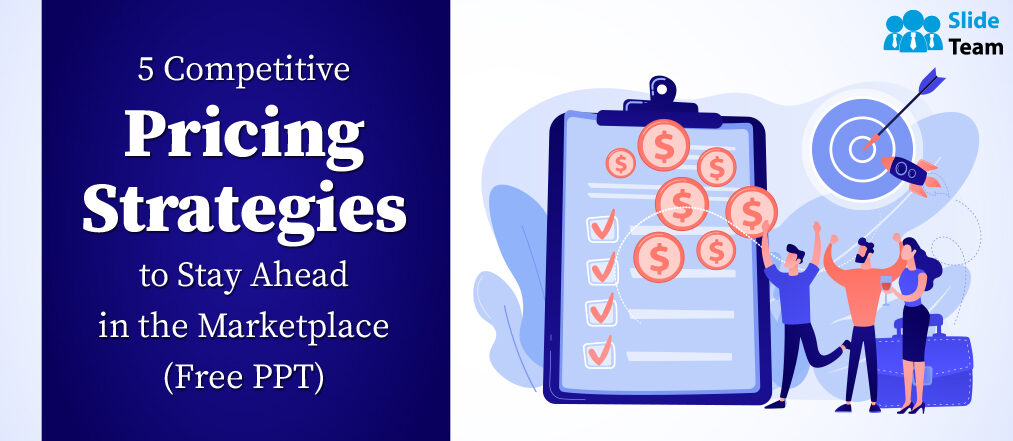Maintaining competition is crucial for long-term success in the dynamic business environment of today. One of the most crucial aspects of maintaining a competitive edge is pricing strategy. Price has a direct impact on consumer perceptions, market positioning, and ultimately, the bottom line.
Let's explore five competitive pricing strategies that businesses can adopt to stay ahead in the marketplace.
5 Competitive Pricing Strategies That You Should Know
- Cost-Plus Pricing: Finding the Sweet Spot
Cost-plus pricing, also known as markup pricing, involves adding a predetermined profit margin to the cost of producing a product or delivering a service. This straightforward approach ensures that each sale contributes to covering both costs and generating profit. However, it's essential to strike the right balance between pricing low enough to attract customers and high enough to generate sustainable profit. Cost-plus pricing is especially effective for industries with stable costs and limited pricing pressure.
- Value-Based Pricing: Aligning Price with Customer Perceptions
Value-based pricing hinges on the notion that customers are willing to pay based on the perceived value of a product or service. This strategy requires a deep understanding of your target audience and their pain points. By emphasizing the unique benefits and solving specific customer problems, businesses can set higher prices that match the perceived value. Value-based pricing allows companies to cater to various customer segments with different willingness-to-pay levels, maximizing revenue.
- Competitive Pricing : Staying in the Race
Competitive pricing involves setting prices in alignment with those of competitors in the market. It's a strategy that works well when the focus is on maintaining market share rather than being the lowest-priced option. However, blindly matching competitors' prices can lead to a race to the bottom, affecting profitability. To succeed with competitive pricing, businesses need to continually monitor the market, differentiate themselves through additional value offerings, and adapt their prices strategically.
- Psychological Pricing: Playing with Perception
Psychological pricing capitalizes on consumers' cognitive biases and perceptions to influence buying decisions. Strategies like "charm pricing" (ending prices with 9, e.g., $9.99) create an illusion of a significantly lower price, even though the difference is minimal. Additionally, "prestige pricing" positions products as high-quality and exclusive by setting prices higher than competitors. Understanding the psychological triggers that influence consumers can lead to increased sales and a stronger market position.
- Dynamic Pricing: Navigating Market Fluctuations
In an ever-changing market, dynamic pricing adapts to fluctuations in demand, competition, and external factors. This strategy relies on real-time data analysis to adjust prices based on supply and demand dynamics, time of day, seasonality, or even individual customer behavior. While dynamic pricing can lead to increased revenue and competitiveness, it requires sophisticated pricing algorithms and a deep understanding of market trends.
Choosing the Right Strategy: Factors to Consider
Selecting the appropriate pricing strategy involves a blend of market research, internal capabilities, and business goals. Here are some factors to consider when deciding which competitive pricing strategy to adopt:
- Industry and Market Dynamics: Different industries have unique competitive landscapes and customer expectations. Analyze your industry's pricing norms and trends to align your strategy effectively.
- Customer Segmentation: Understanding your target audience's preferences, buying behaviors, and willingness to pay is pivotal. Tailor your pricing strategy to cater to various customer segments.
- Value Proposition: Your product or service's unique value proposition should influence your pricing decision. Consider the benefits you offer compared to competitors.
- Cost Structure: Evaluate your cost structure, including production, distribution, and marketing expenses. Ensure that your chosen pricing strategy covers costs while allowing for profit.
- Competitor Analysis: Study your competitors' pricing strategies, strengths, and weaknesses. Strive to differentiate your offering while remaining competitive.
- Long-Term Goals: Consider whether your pricing strategy aligns with your long-term business goals, whether it's market penetration, maximizing revenue, or establishing premium positioning.
Final Thoughts
In the world of business, pricing isn't just about numbers – it's a strategic decision that influences customer perceptions, market positioning, and profitability. By carefully considering factors such as industry dynamics, customer preferences, and value propositions, businesses can select and implement the most suitable competitive pricing strategy. With the right strategy in place, companies can navigate the marketplace with confidence, secure a competitive advantage, and thrive in the face of evolving challenges.
Click Here to Get the Free PPT





 Customer Reviews
Customer Reviews



















